Now This is a Handy Little Training Device
Having trouble with your grip? If so, this little device may be the answer. Check it out.
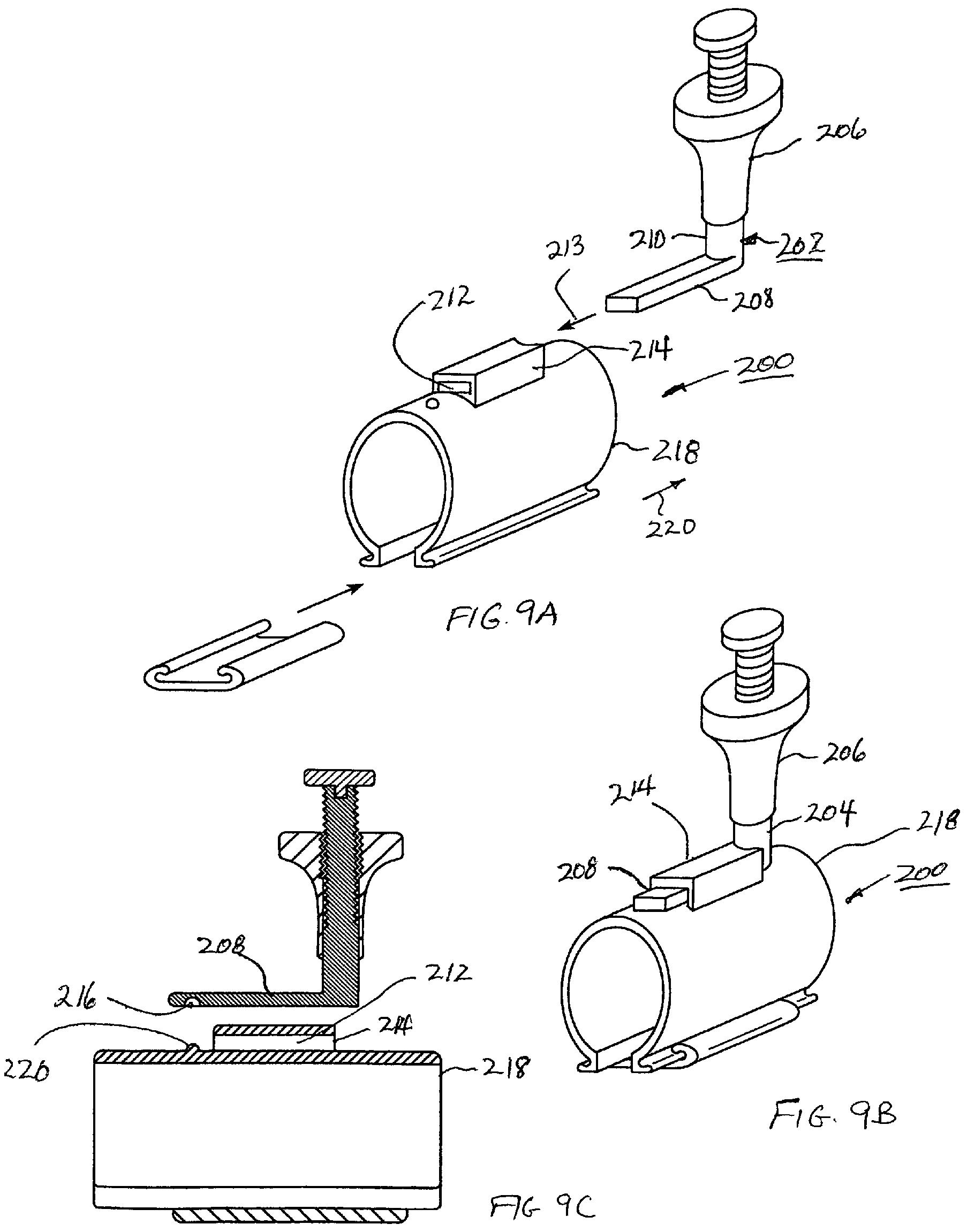
Simple enough, right? The drawing comes from USPN 7,591,733 titled “Device for Reducing Effect of Dominant Hand on Golf Swing,” which explains:
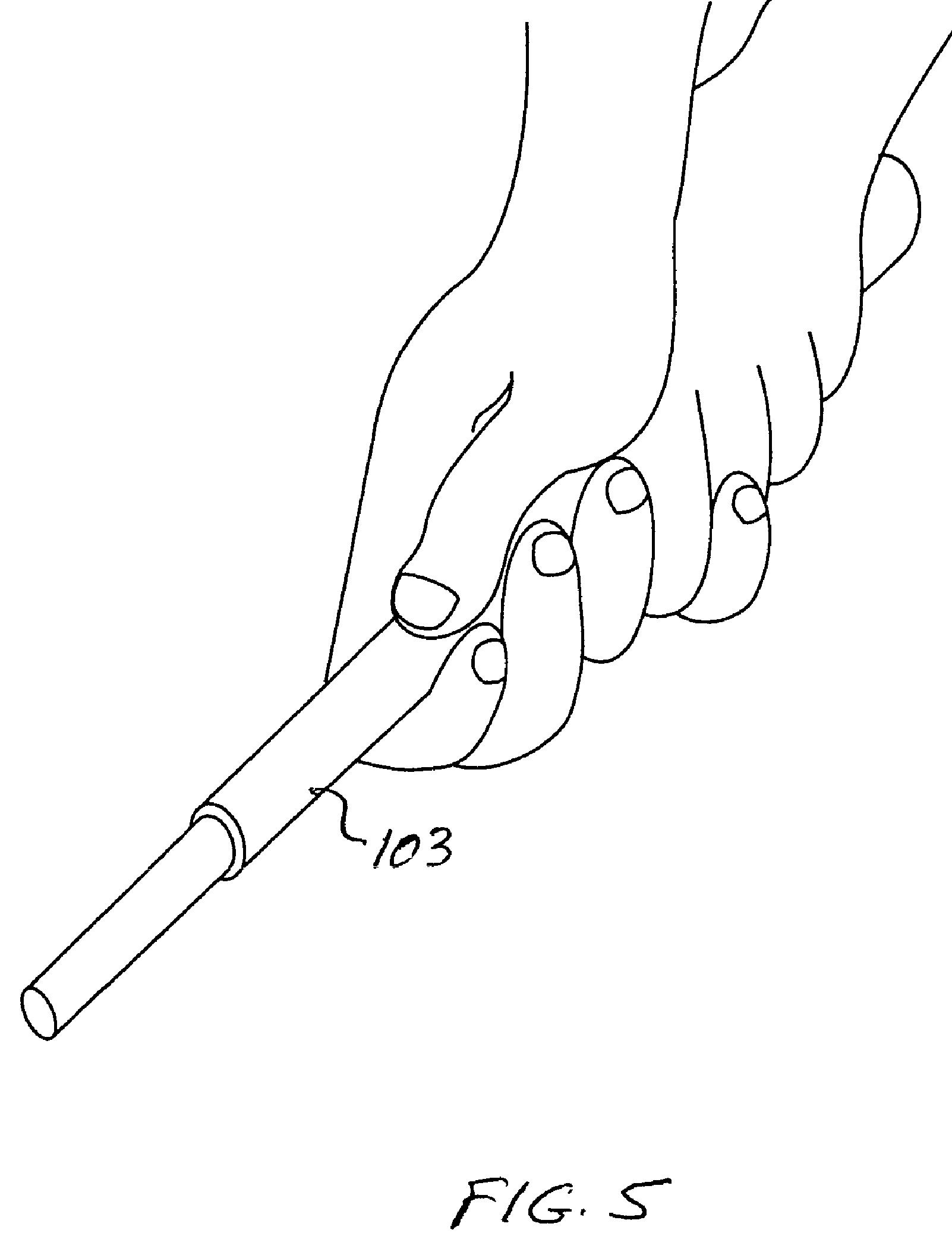
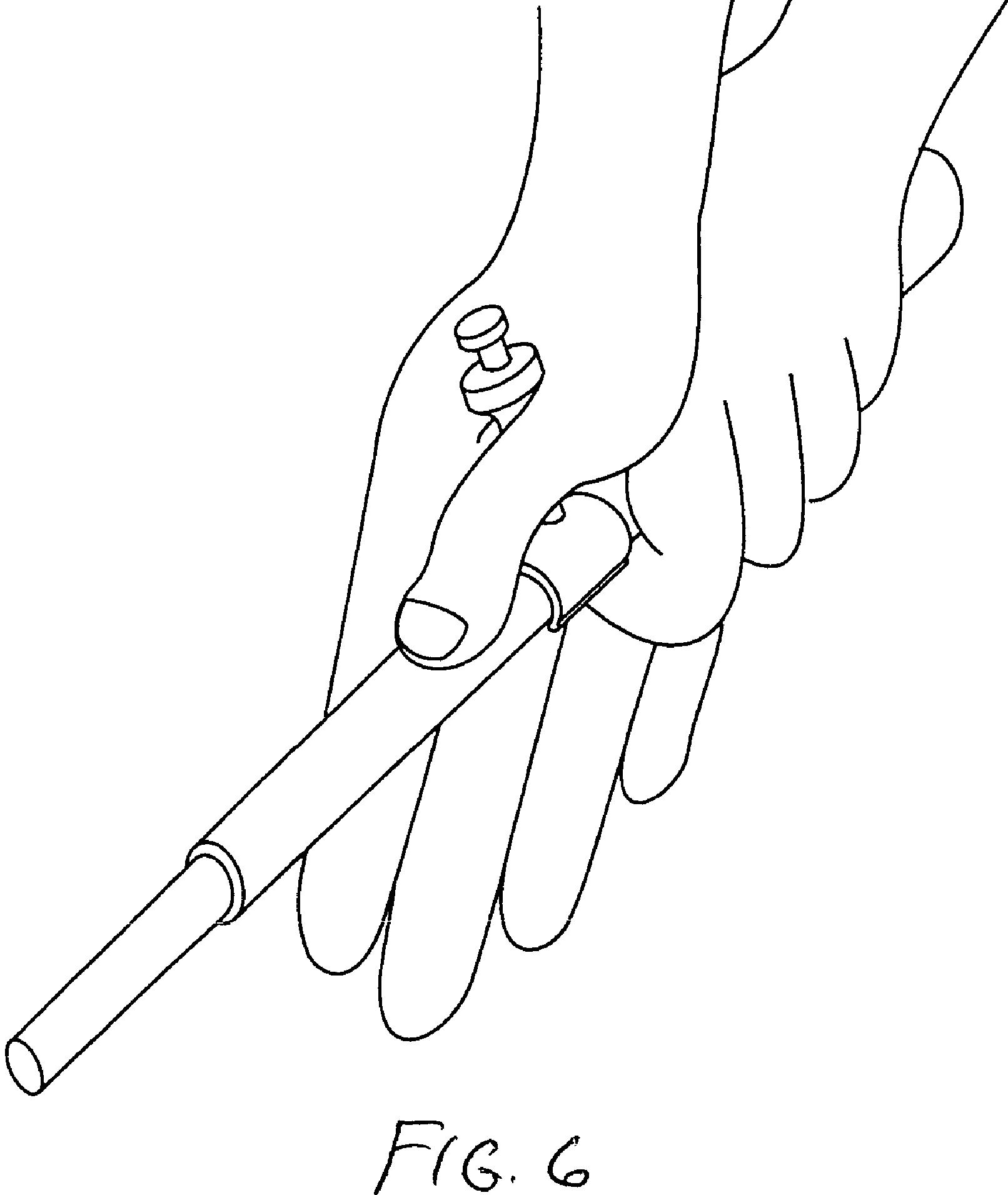
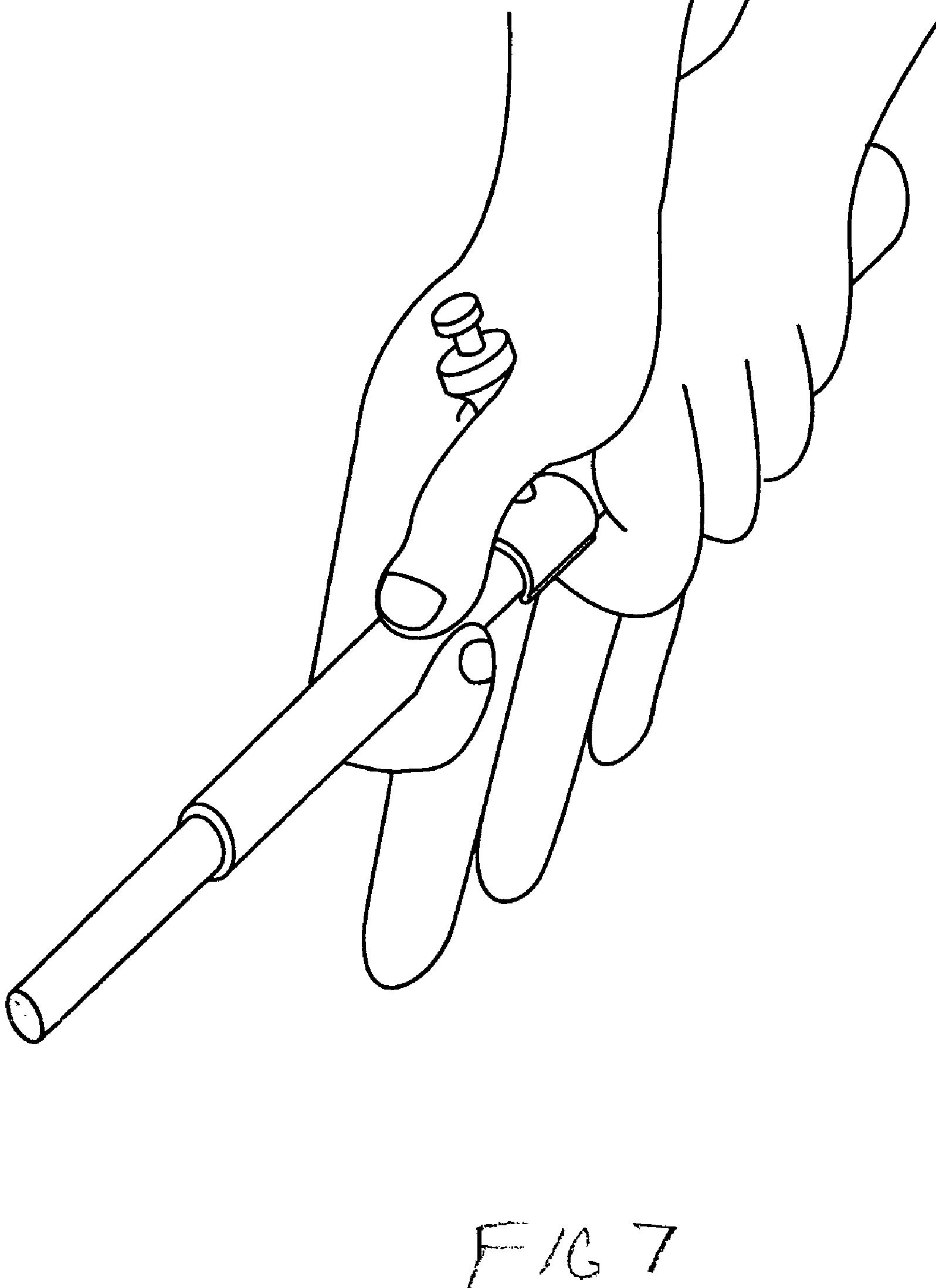
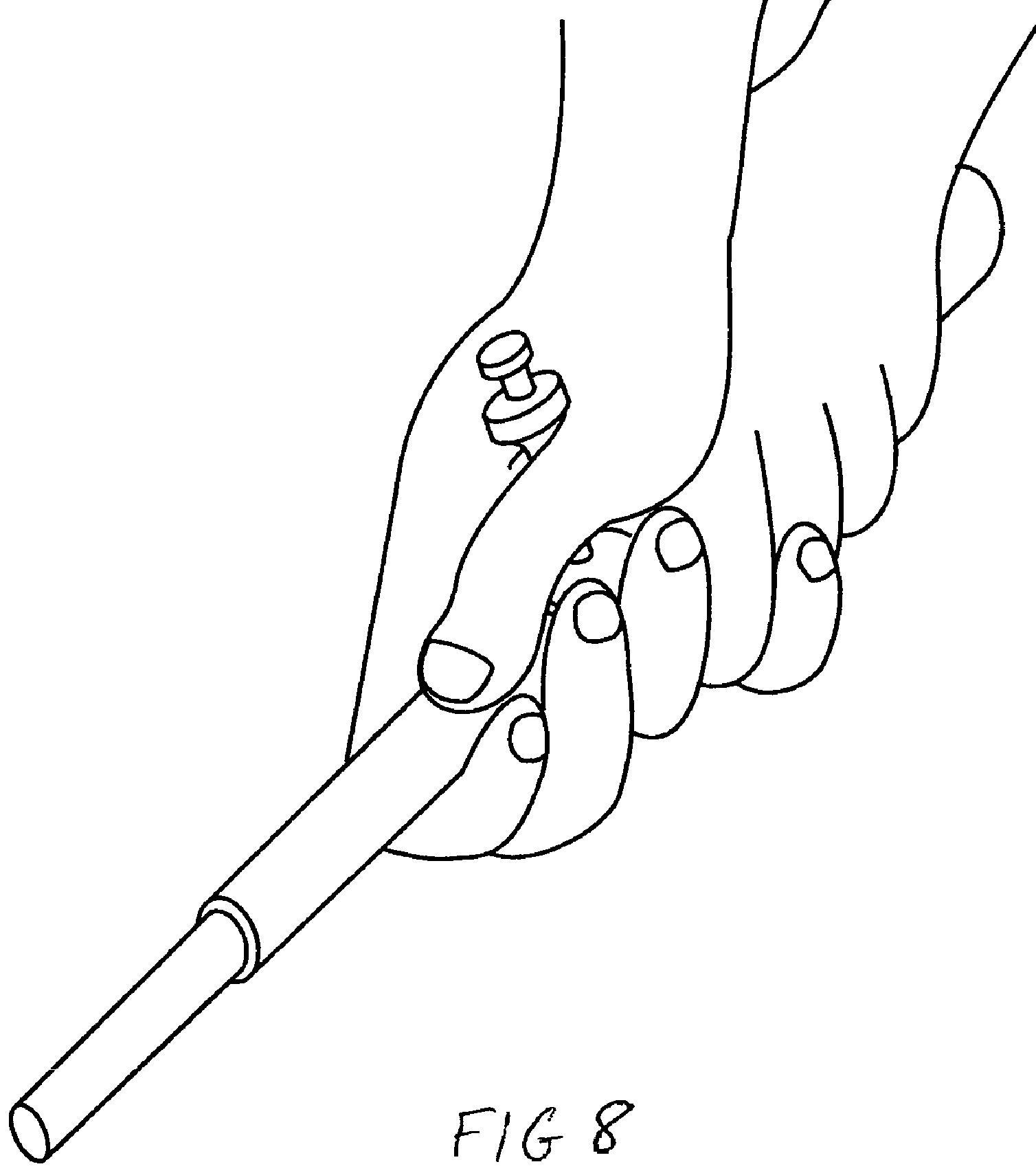
Looks simple enough (and inexpensive enough) that I suspect most golfers would give it a try.
Dave Dawsey - Keeping an Eye on Golf Grip Inventions
PS – check out other golf grip patent related posts here

Simple enough, right? The drawing comes from USPN 7,591,733 titled “Device for Reducing Effect of Dominant Hand on Golf Swing,” which explains:
Now, the rest of the story.It is well known that one of the most important elements and a key to a successful golf swing is the golfer's grip. The art of positioning the fingers, hands and pressure applied to the grip has been described numerous times. In addition, there have been many devices invented for the purpose of teaching and achieving an improved golf grip or swing.
The placement of hand and fingers on grip of club is rather easily accomplished by careful observation and following instructions. But the feeling of gripping a club and the amount and placement of pressure is very difficult to describe to an individual since each interprets and feels differently.
As simple as gripping a club is, it is the most recognized and believed to be the leading cause of an inconsistent golf swing. For an efficient swing, the importance of placement of fingers and hands is fundamental. But knowing the fundamental alone does not cure problems in inconsistency; most problems may be cured by understanding how the sub-dominant and dominant hand work together.
It is known that the sub-dominant hand leads and controls the path of the golf swing. However, many golfers tend to utilize the dominant side over the sub-dominant side, consciously or unconsciously, more than necessary. This can be caused by an increase of the grip pressure, usage of wrist, turning of the hand or even the body movement. Nervousness, anxiousness, desire, lack of concentration, . . . etc. can also cause this type of problem. The actual golf swing takes a very short time from start to finish and problems can occur anytime during the swing.
What is required to overcome these mistakes is to provide a device that is simple to use and allows the user to practice conveniently as possible and not to interfere in anyway with the practice swing and to be able to compare one's own swing to the correct swing and be able to repeat the corrected swing consistently for trust and self confidence.
One of the most common and leading cause of mistake in golf is the grip. In many cases, the positioning of the hand and its pressure applied to the grip will determine the swing path and the angle of the club head, especially at the point of impact with the golf ball. A golf swing uses every part of the body sequentially and/or simultaneously in continuous motion. Therefore, when the mistake occurs during the motion, it most likely creates another mistake that leads to others. The grip connects the user's body and the club and it is one of the most important elements of the resultant golf swing. The grip has to be securely connected and at the same time, be sensitive to the club feel.
.
.
.
Device 10 is designed to teach a player (left or right handed) the proper use of the sub-dominant and dominant hands, the relationship between hands, and the hand relationship between club-head and hands. These teachings enable a user to overcome many problems in his/her golf swing, help master the consistent swing that makes golf enjoyable and help users to concentrate on shot making instead of being worried about making contact with the golf ball.
A golf swing using the fundamental, or conventional, grip is conducted with both arms relaxed, extended and holding club lightly, the shoulder being turned to take back the golf club and letting the sub-dominant side (left for right handed and right for left handed) lead the swing.
The palm of the dominant hand is facing the target; at this position, the angle of the palm of the hand is the same angle as the leading edge of the club head. At the addressing stage, the club head is square to the direction of the target or perpendicular to its swing path. For the correct swing, as soon as the club head leaves the address position to the back swing, the golf club head starts to turn, or rotate, to the same angle as the swing path or plane and stays at the same angle.
The club head has to point to a certain direction during the swing such as the direction of the angle of the golf club leading edge, the same angle as of the swing plane and the same as the opened hand palm.
This open hand method is helpful to the learning process, since the player learns to concentrate only on the position or angle of the hand to know the position of the club head, instead of trying to adjust the club head by hand.
The device of the present invention does not control or maneuver the club or club head by hand but enables the club to act as the extension of the hand and thus enabling the club head react to or follow the hand.
Device 10 improves a golf swing by using a method of practicing the golf swing with an opened hand as shown in FIG. 6, or partially opened as shown in FIG. 7 with a hooked index finger and the rest of the fingers extended as shown. This method prevents the dominant hand from controlling the golf club by making the sub-dominant hand work harder and take the leading role in the swing.
Device 10 is designed ergonomically to fit in the hand of a conventional golf grip, as shown in FIG. 8, with minimum interference with the swing (the device is for practice purposes only, not for a regulated golf game).




Looks simple enough (and inexpensive enough) that I suspect most golfers would give it a try.
Dave Dawsey - Keeping an Eye on Golf Grip Inventions
PS – check out other golf grip patent related posts here

Comments